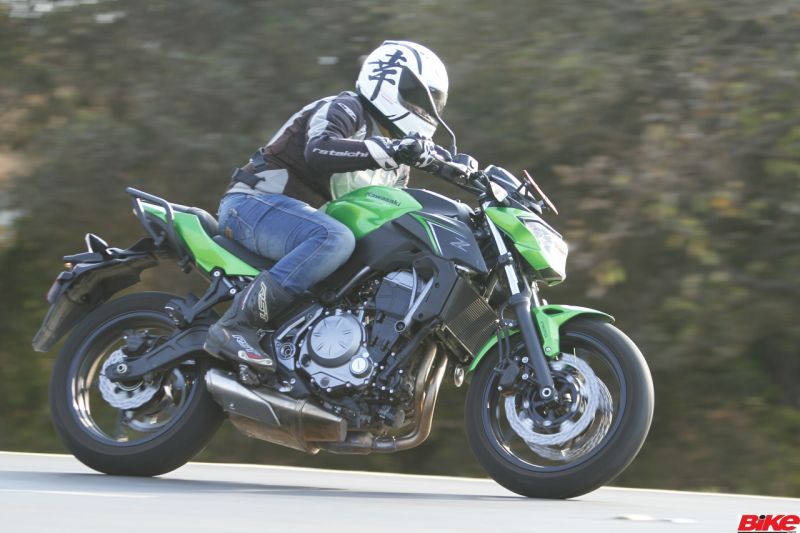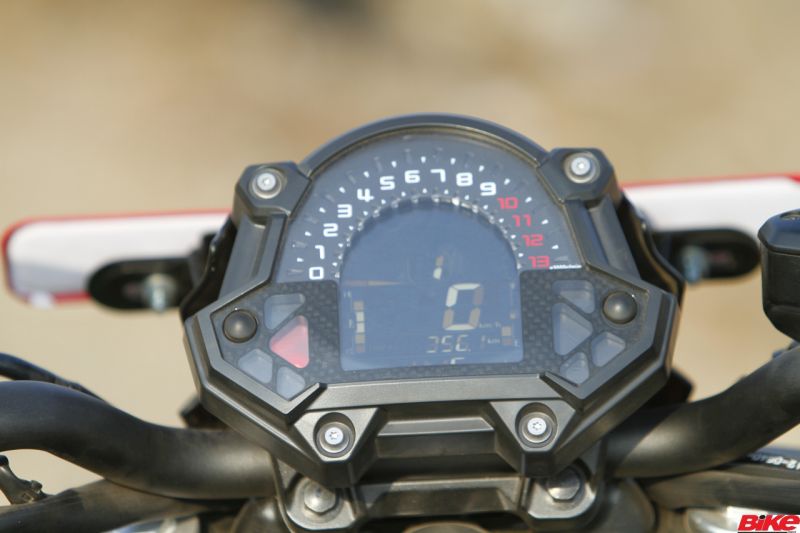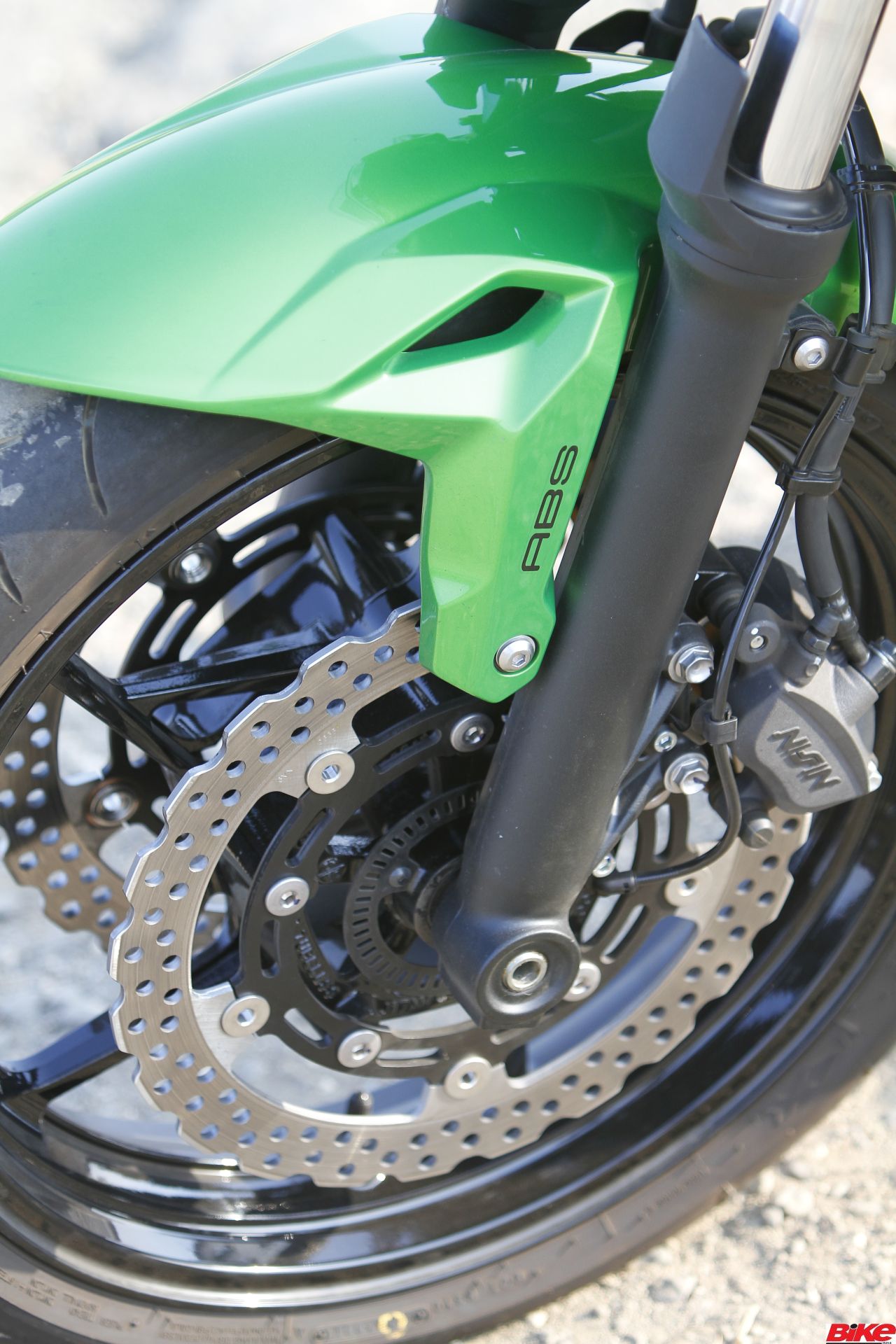
Kawasakis are one of the best options you have in the Indian middleweight segment. After parting ways with Bajaj Auto, Kawasaki have been on a mission in India. They’ve launched a whole bunch of new bikes, right from the Z250 to the Z1000R; Ninja 300 to the Ninja ZX-10 RR. Perhaps one of the most important being the recently introduced Z650.
Story: Sarmad Kadiri
Photography: Sanjay Raikar
The Z650 is an all-new introduction which replaces the ER-6n and looks much more dapper. It has a no-nonsense/don’t-mess-with-me kind of stance and looks like a miniature version of the recently launched Z900. It’s so compact that it hardly feels like a 650-cc bike; which, according to me, is a great thing because it becomes that much more manageable. But those who prefer bulk over agility, are slated to be disappointed. Unlike the 2017 Ninja 650’s clip-ons, the Z has a conventional handlebar which makes the riding position more upright and relaxed. This makes the Z650 more apt for the city.
On the highway you do have to deal with all the wind-blast on this naked street-fighter, though you can duck down and caress the shapely 15-litre tank to avoid some of it. The advantage of not having a front fairing (and rear-view mirrors mounted on the fairing) is that it’s so easy for daily use, especially while squeezing into busy parking lots or cutting through traffic.
The saddle height has been lowered by 15 mm and the fuel tank is more compact now which holds one litre less than before. At first I found the all-digital console a little challenging to read on the go, but, with time, I got used to the display. The textured seat-cover offers good grip, but I wish it had ‘Z’ branding on it just like the one on the Z800.

This naked street-fighter practically has the same underpinnings as its sport-tourer sibling – the Ninja 650 – which, by the way, has got some big changes to improve its dynamics. To begin with, the old perimeter frame has been dumped for a high-tensile steel trellis frame, as seen on many Ducati models and even on the KTM bikes. This along with a new swingarm and a pair of lighter alloy wheels have reduced the weight substantially. The Z650 is almost 20 kg lighter than the ER-6n!
There’s a brand new rear suspension set-up. So, out goes the offset monoshock linkage system and in comes a horizontal back-link monoshock. Why, you ask? The idea is to avoid any protrusions beneath the swingarm and also to keep the shock-absorber as far away from the exhaust as possible. This is so that the heat from the pipes doesn’t impact the oil and gas pressure in the system, which could have, in turn, hampered the stability of the bike. Up front, both the bike get a conventional 41-mm fork, although the two Kawasakis should have upgraded to upside-down front suspension like most modern bikes.

The motor has also been carried forward, but has been tweaked to meet BS-IV norms. Now the 649-cc liquid-cooled, parallel-twin comes with longer header pipes, 36-mm throttle bodies and redesigned intake and exhaust cams. The focus is to provide smoother power delivery and beef up the mid-range. At 68 PS, the power output is similar to the outgoing Ninja 650’s 72 PS but is slightly low-revving now. Power peaks at 8,000 rpm here compared to the older version’s 8,500 rpm. To improve low-end performance, Kawasaki have slightly increased the torque to 65.7 Nm peaking at 6,500 rpm (the old one makes 64 Nm at 7,000 rpm).
As I rode the Z up and down the hill around Pune, the smoother power flow became evident immediately. Even on long rides, the engine temperature never becomes uncomfortable which, with the smooth power delivery, can let one ride these Kawasakis for days on end without much fatigue.
The free-revving motor quickly climbs the revs and offers a meaty midrange, but tends to taper as it approaches the redline hinting at you to shift up a bit early. Keep the throttle pinned and the 650 zaps from 0-100 km/h in close to five seconds. The six-speed gearbox is slick as ever and, with the advantage of a slipper clutch, makes even heavy down-shifting seem like a breeze. The braking department has also drastically improved. The dual 300-mm petal discs up front and 220-mm single disc now with the addition of ABS as standard have improved feel and bite to a great extent. Moreover, both the new Z650 feels a lot safer on our unpredictable roads, over the bike it replaces.


Leave a Reply